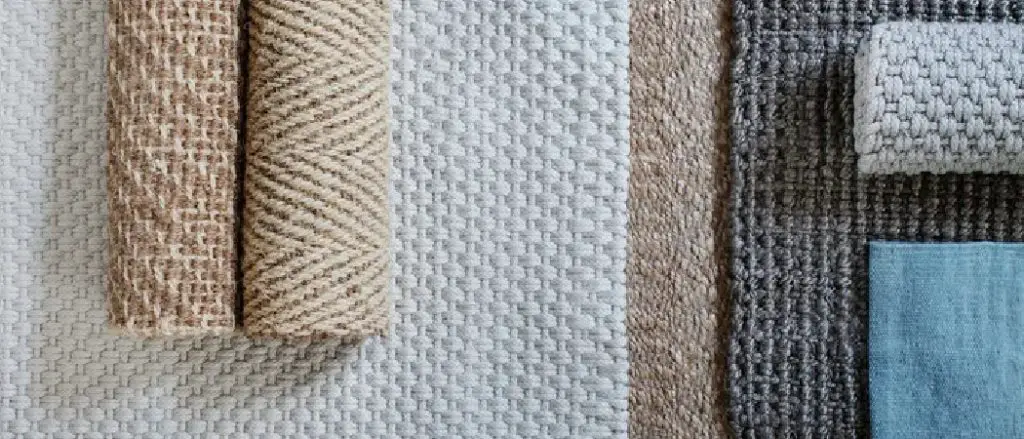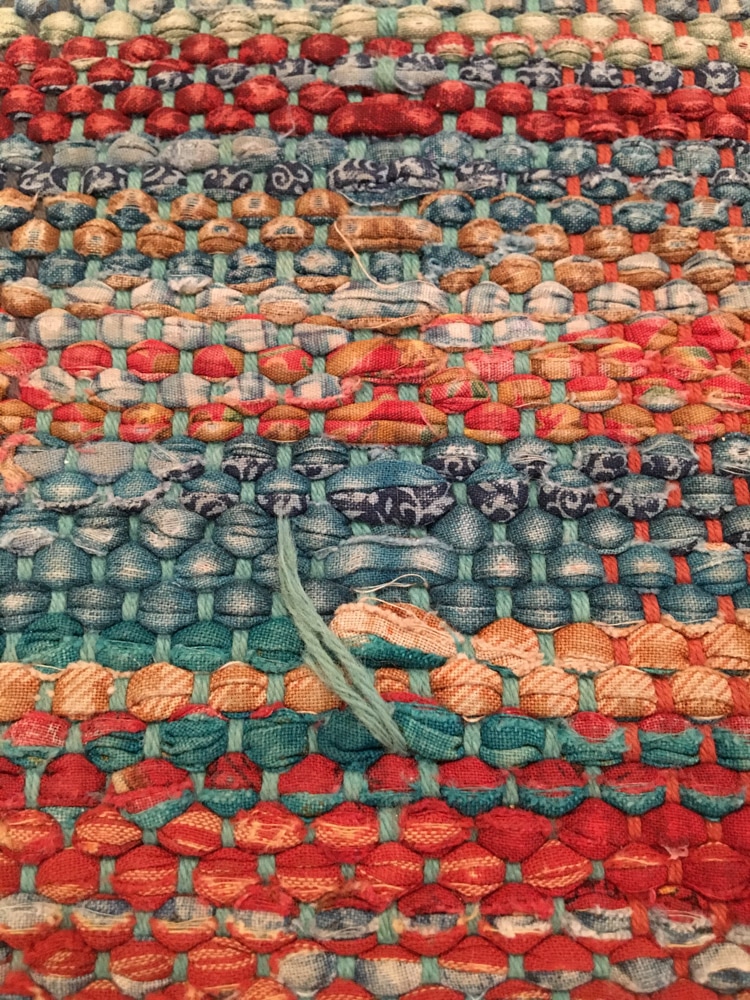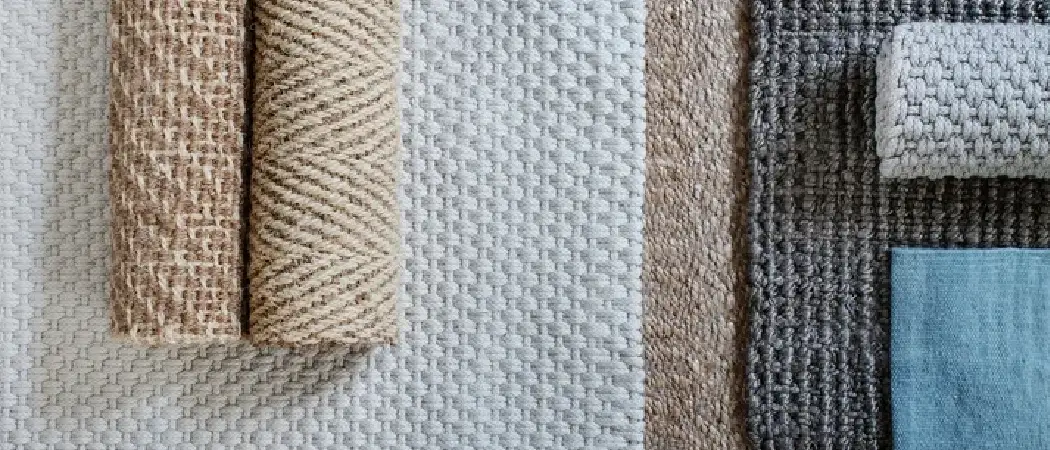To fix a fraying rug, you can simply use fabric glue or clear nail polish on the frayed edges.

Identifying The Fraying
Identifying the fraying on a rug is the first step in fixing the issue. Inspecting the rug thoroughly will help you locate problem areas and determine the extent of the damage. By identifying the fraying early, you can prevent it from getting worse and extend the life of your rug.
Inspecting For Damage
When inspecting a fraying rug, start by carefully examining the edges and corners for any signs of wear and tear. Look for loose fibers, unraveling threads, and areas where the rug backing may be exposed. Use a bright light to help you spot small imperfections that may lead to larger issues down the line.
Locating Problem Areas
Once you’ve inspected the entire rug, make a note of the problem areas. Create a mental or written map of where the fraying is occurring, paying special attention to high-traffic areas or places where the rug is frequently moved or shifted. This will help you prioritize which areas need immediate attention and care.
Gathering Necessary Tools
If you have a fraying rug that needs some repair, the first step is to gather all the necessary tools. Having the right tools on hand will make the process much easier and ensure that your rug is fixed properly. Let’s take a look at the essential materials and specialized equipment you will need.
Essential Materials
Before you begin fixing your fraying rug, make sure you have the following materials:
| Materials | Description |
| Rug Repair Adhesive | A strong adhesive specifically designed for repairing rugs. |
| Scissors | A sharp pair of scissors for trimming loose threads. |
| Matching Thread | A thread that matches the color of your rug for sewing any loose edges. |
| Needle | A needle with a large eye for easy threading. |
Specialized Equipment
In addition to the essential materials, you may also need the following specialized equipment:
- Rug Needle: A curved needle specifically designed for rug repair, allowing you to stitch the frayed edges securely.
- Rug Hooking Tool: If your rug has any loose loops, a rug hooking tool will help you pull them back through the backing.
- Iron-on Rug Binding Tape: This tape can be used to reinforce the edges of your rug, preventing further fraying.
- Rug Pad: If your rug tends to slip or bunch up, a rug pad will provide extra grip and keep it in place.
Having all these tools and materials ready before you start repairing your fraying rug will save you time and ensure a successful fix. So, gather everything you need and let’s get started on restoring your rug to its former glory!
Preparation For Repair
Before you start the repair process for a fraying rug, proper preparation is key to ensure a successful outcome. Preparation includes Cleaning the Rug and Securing the Work Area. Following these steps will help you effectively repair your rug and prolong its life.
Cleaning The Rug
Begin by thoroughly vacuuming the rug to remove any dirt, debris, or loose fibers that may interfere with the repair process.
- Use a gentle suction attachment to avoid causing further damage to the frayed edges.
- For stained areas, spot-treat with a mild detergent and water solution, then blot with a clean cloth.
Securing The Work Area
Prepare a clean and flat work surface to lay the rug for repair. Ensure the area is well-lit to clearly see the fraying sections that need attention.
- Use a non-slip rug pad or carpet tape to secure the rug in place and prevent it from shifting during the repair.
- Keep sharp tools and materials organized and within reach to avoid accidents while working on the rug.

Repairing The Fraying Edges
Fixing fraying rug edges is crucial for prolonging rug lifespan. Here’s how to repair fraying areas effectively.
Trimming Loose Threads
Trimming loose threads prevents further unraveling. Use sharp scissors for a clean cut.
Applying Fray Prevention
Applying fray prevention products secures the edges. Use fabric glue or special fray-stopping products.
Utilizing Rug Repair Techniques
When your rug starts fraying, it’s essential to utilize rug repair techniques to restore its beauty and functionality. By incorporating proper methods, you can prevent further damage and prolong the lifespan of your rug.
Incorporating Stitching Methods
Using stitching methods is an effective way to mend frayed areas of your rug. First, gather necessary supplies such as a needle, strong thread, and scissors. Place the rug on a flat surface and carefully sew along the frayed edges. This will secure the fibers and prevent unraveling.
Implementing Patching Solutions
If the fraying on your rug is extensive, implementing patching solutions can help reinforce the damaged areas. Cut a piece of fabric or an old rug that matches the texture and color of your rug. Apply fabric glue to the patch and press it firmly onto the frayed area. Allow it to dry completely for a seamless repair.
Finishing Touches
When it comes to restoring a fraying rug, the finishing touches are essential to ensure the repair blends seamlessly and maintains longevity. Incorporating the right techniques can make all the difference in achieving a professional-looking result.
Blending The Repair With The Rug
To seamlessly blend the repair with the rest of the rug, consider using threads that closely match the original color and texture. Carefully weave the new threads into the existing pattern, ensuring a consistent look. Trim any excess materials to create a smooth finish that seamlessly integrates with the rug’s design.
Ensuring Longevity Of The Fix
To prolong the life of the rug repair, secure the threads with a suitable adhesive to prevent unraveling. Gently press the repaired area to ensure it adheres firmly to the backing. Avoid excessive traffic on the repaired section for a few days to allow the adhesive to set properly. Regularly inspect the repaired area for any signs of wear and tear and address them promptly to maintain the rug’s condition.
Professional Consultation
Rug repair can be a delicate task, especially when dealing with a fraying rug. While some minor repairs can be handled at home, there are instances where seeking professional consultation becomes necessary. Understanding when to seek help and selecting a qualified rug repair expert are crucial steps in ensuring the longevity and quality of your rug.
Understanding When To Seek Help
Recognizing the severity of rug damage is the first step in determining whether professional consultation is required. If the fraying extends to a significant portion of the rug or if the threads are unraveling at a rapid rate, it’s time to consider seeking the expertise of a professional.
Selecting A Qualified Rug Repair Expert
When choosing a rug repair specialist, look for professionals with a proven track record of successful repairs. Ensure that the expert has experience in dealing with the specific type and material of your rug, whether it’s a delicate silk rug or a durable wool one.
“`
In WordPress, the above HTML will help in creating an engaging section of a blog post that focuses on the importance of seeking professional consultation and selecting a qualified rug repair expert when dealing with fraying rugs.
Preventive Care For Rugs
Rugs are an essential part of our interiors, adding warmth and beauty to our homes. However, over time, rugs can start fraying, which not only affects their appearance but also their durability. To avoid the hassle of fixing a fraying rug, it’s crucial to implement preventive care measures. By taking a proactive approach and following simple tips for maintaining rug health, you can ensure that your rugs remain in good condition for the long term.
Tips For Maintaining Rug Health
- Regularly vacuum your rugs to remove dirt, dust, and debris that can wear out the rug fibers over time.
- Use a rug pad to provide a protective cushion between the rug and the floor, reducing friction and preventing slipping.
- Avoid placing heavy furniture directly on the rug, as this can result in indentations and uneven wear.
- Rotate your rugs every few months to distribute foot traffic evenly and prevent excessive wear in specific areas.
- Keep rugs away from direct sunlight to prevent color fading and deterioration of the fibers.
Implementing Preventive Measures
One of the most effective preventive measures for maintaining rug health is regular cleaning. By promptly attending to spills and stains, you can prevent them from becoming permanent and causing further damage to the rug. Blot the affected area gently with a clean cloth or paper towel, and avoid rubbing, as this can spread the stain and push it deeper into the fibers. If needed, use a mild carpet cleaner or a mixture of vinegar and water to remove the stain.
Another important preventive measure is to trim loose threads or yarn on the rug’s surface to prevent fraying. Use a pair of sharp scissors and cut the loose fibers as close to the rug’s surface as possible, taking care not to cut any surrounding fibers.
Additionally, regular inspection of your rugs can help identify any signs of wear or damage early on, allowing you to address them promptly. Look for loose threads, unraveling edges, or areas that appear thin or weakened. By spotting these issues before they worsen, you can take the necessary steps to repair the rug and prevent further fraying.
By implementing these preventive measures and following the tips for maintaining rug health, you can ensure that your rugs stay in excellent condition for years to come. Taking care of your rugs not only preserves their beauty and longevity but also helps you maintain a clean and healthy living environment.

Frequently Asked Questions On How To Fix A Fraying Rug
How Do You Fix Frayed Edges On A Rug?
To fix frayed edges on a rug, trim any loose threads with sharp scissors. Apply fabric glue or a fusible bonding tape to secure the edges. Use a needle and thread to hand stitch any larger tears or holes. Finally, trim any excess fabric for a neat finish.
Can You Repair Frayed Carpet?
Yes, frayed carpet can be repaired by trimming the affected area and then re-sealing the edges. It’s important to seek professional help to ensure a thorough and proper repair job. Regular maintenance and avoiding sharp objects can prevent fraying in the future.
What To Do With Fraying Rug?
To prevent further fraying, trim any loose fibers and apply fabric glue to secure the edges. You can also use rug binding or tape to reinforce the frayed areas and prolong the rug’s lifespan. Regular maintenance and gentle handling can help maintain the rug’s appearance.
How Do You Edge A Fraying Carpet?
To edge a fraying carpet, apply fabric glue along the frayed edges, press firmly to secure, and trim any excess threads.
Conclusion
A fraying rug can be a nuisance in any home, but with the right tips and techniques, you can easily fix the problem. From trimming the frayed edges to using fabric adhesive or sewing techniques, there are various approaches you can take.
By taking these steps, you can restore your rug to its former glory and ensure it lasts for years to come. So don’t let a fraying rug bring you down, take action and revive your rug’s beauty today.

